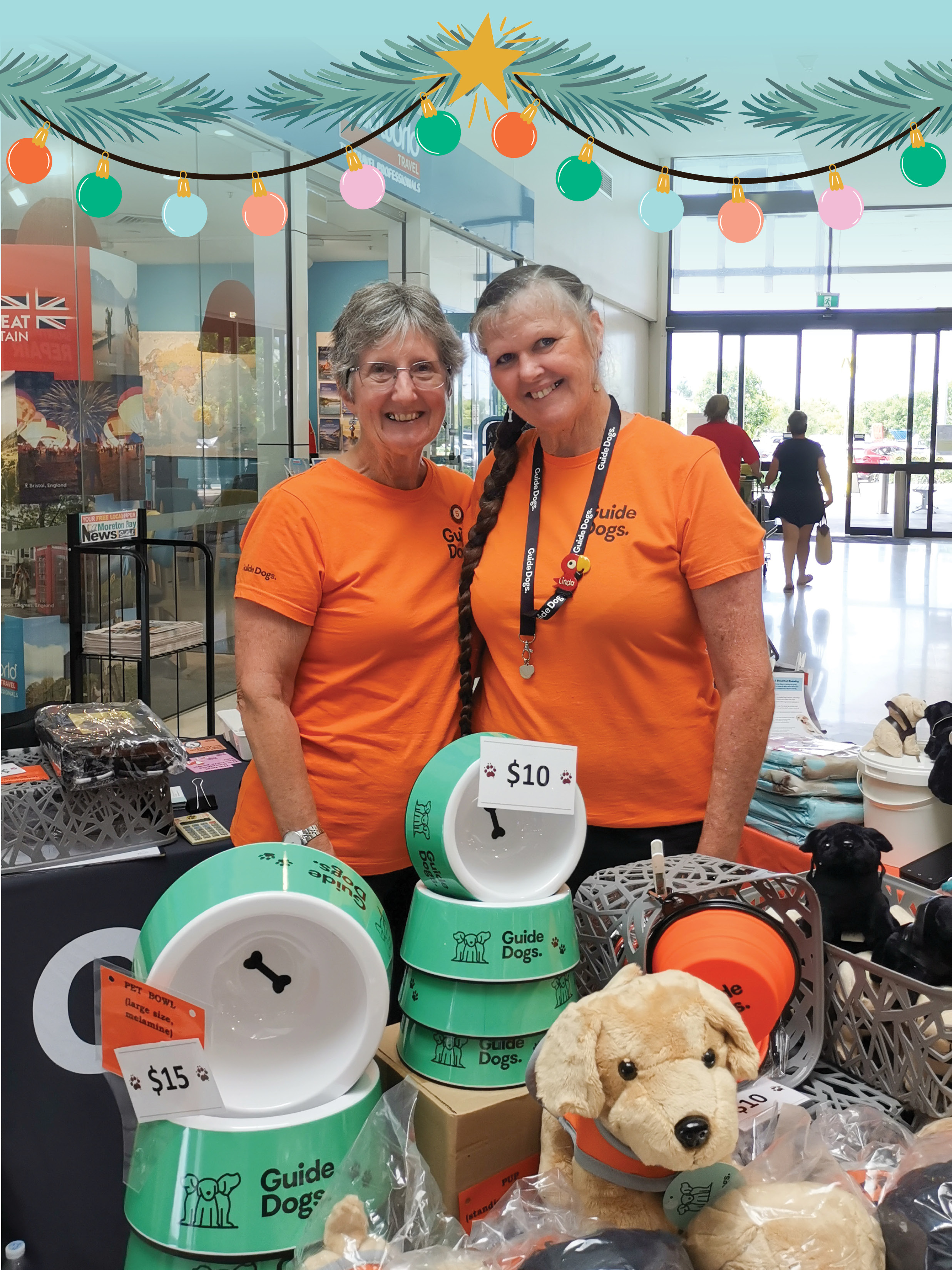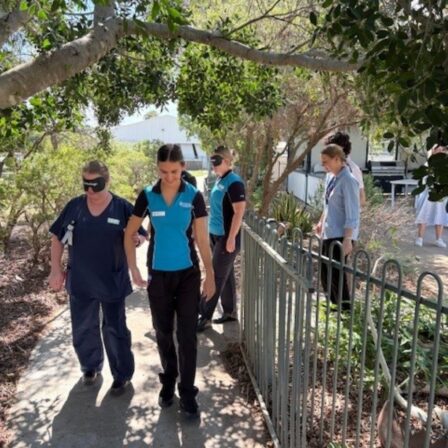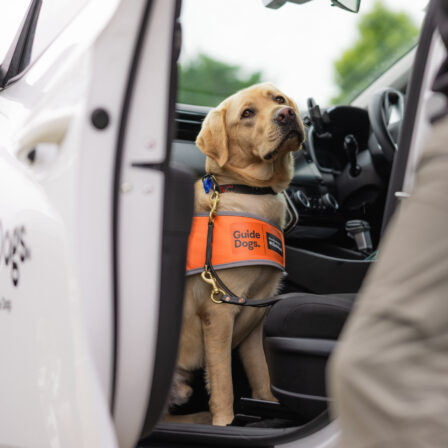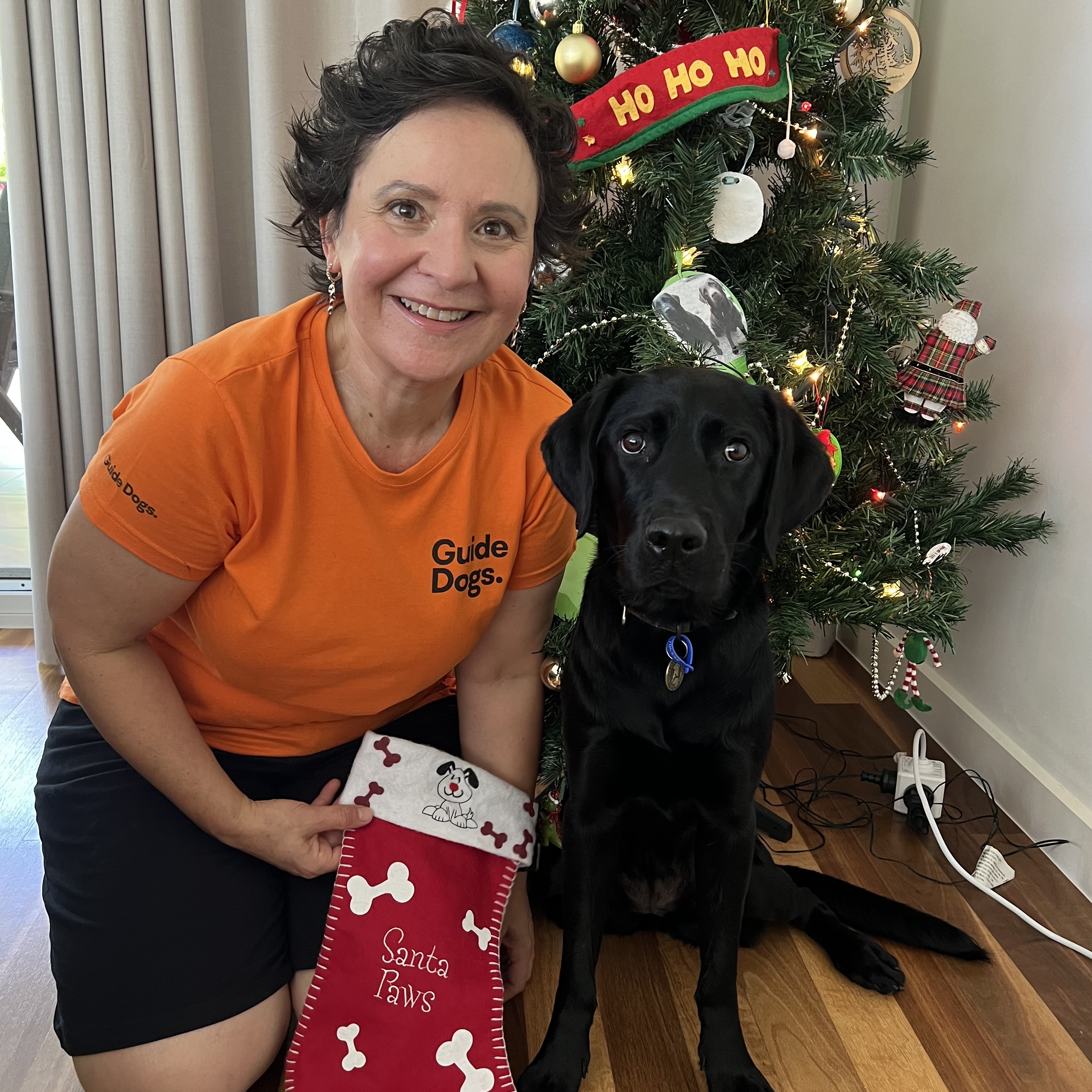News
Five Top Tips for Road Safety
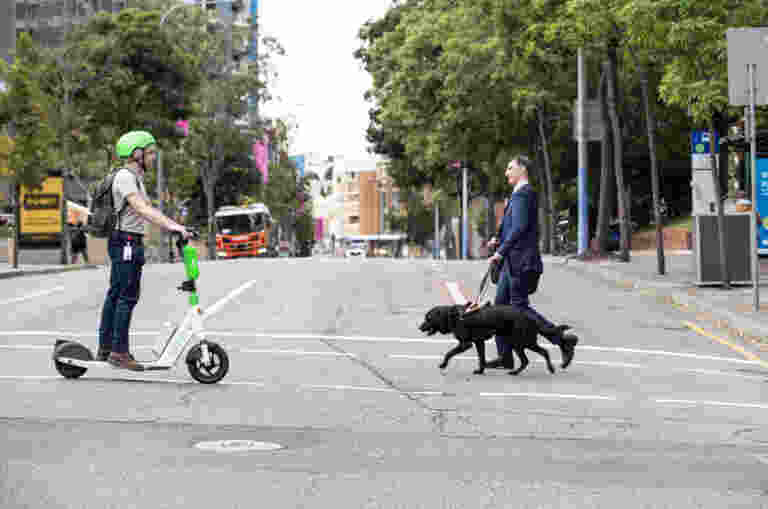
As the holiday season winds down, many Queenslanders are back on the roads—dropping children off at school, heading back to work, or getting out for daily errands. This is the perfect time to think about road safety, especially for pedestrians with low vision or blindness.
Guide Dogs Queensland and Transurban are working together to raise awareness of road and roadside safety for all Queenslanders. A recent survey found that nearly 96% of people with low vision or blindness have experienced footpath issues in the past two years, with obstacles like e-scooters, shared paths, and crowd control barriers creating new challenges. Together, we can help ensure that our roads and public spaces remain accessible and safe for everyone.
Here are our Top Five Tips for Road Safety to help everyone get around safely, including pedestrians with low vision or blindness:
1. Keep Walkways Clear of Obstacles
Clear and unobstructed walkways are essential for the safety of pedestrians, especially those with low vision or blindness. Common obstacles such as parked bikes, scooters, wheelie bins, and construction materials can block paths and create hazards. Help do your part in keeping our public walkways clear by avoiding leaving personal items like bags or bicycles on the footpath.
2. Be Mindful of Traffic Signals and Pedestrian Crossings
Accessible pedestrian signals—those that use sound or vibration—are essential for guiding individuals with low vision or blindness across busy intersections. These signals let pedestrians know when it is safe to cross, but it’s also important for road users to remain vigilant. When driving, always stop at pedestrian crossings and be mindful that not all pedestrians will be able to see you.
When these signals are functioning properly, it makes navigating streets safer for everyone. Be aware and patient around crossings, especially in areas where pedestrians may not have full visibility.
3. Respect Tactile Ground Surface Indicators
Tactile indicators—raised strips or textured ground markings—are designed to guide individuals with low vision or blindness across streets and open spaces. These features are typically found on sidewalks and crosswalks and are crucial for safe navigation. They should never be obstructed by objects like parked vehicles, construction materials, or debris.
If you see tactile markings on the ground, take care not to block them. As a road user, consider that these markings are not just decorative—they are vital for guiding pedestrians through busy environments.
4. Always Drive According to Conditions
When driving at night or in poor weather conditions, it’s important to reduce your speed near pedestrian crossings and exercise extra caution. These conditions can make it harder for all pedestrians, especially those with low vision or blindness, to navigate safely. Visibility is often reduced, and pedestrians may have difficulty hearing approaching vehicles or judging the distance and speed of traffic. By adjusting your driving to suit the conditions, you help ensure that everyone, including those with low vision or blindness, can cross the road safely and confidently.
5. Be Aware of Traffic and Vehicle Movements
Pedestrians with low vision or blindness rely on sound cues, such as engine noise, to gauge traffic. Drivers of electric or hybrid vehicles should be aware that these cars are quieter and may not be heard by people with low vision or blindness. Consider vehicles with Acoustic Vehicle Alert Systems (AVAS), which emit a low-volume hum to help alert pedestrians. Always reduce speed near pedestrian crossings, especially in busy areas or those with limited visibility, and ensure pedestrians can cross safely before proceeding. A moment of patience can prevent serious accidents.
Conclusion
By following these Top Five Tips for Road Safety, you can contribute to a safer, more inclusive community for all road users. Road safety should be a shared responsibility, and by being aware of how our actions impact others, we can help create a space where everyone—whether on foot, bike, or in a car—can move freely and safely.
Together with Transurban, let’s continue to raise awareness and work towards a more accessible and safer environment for all.
